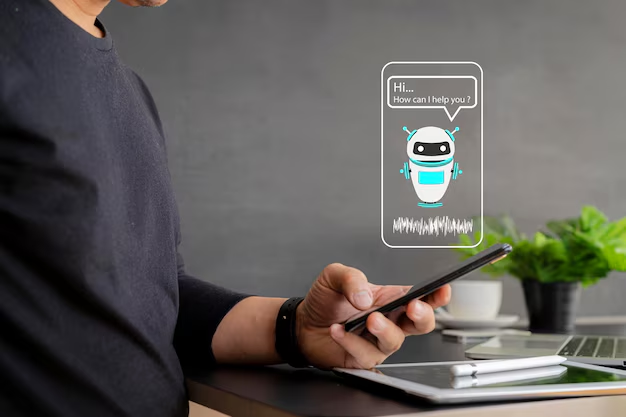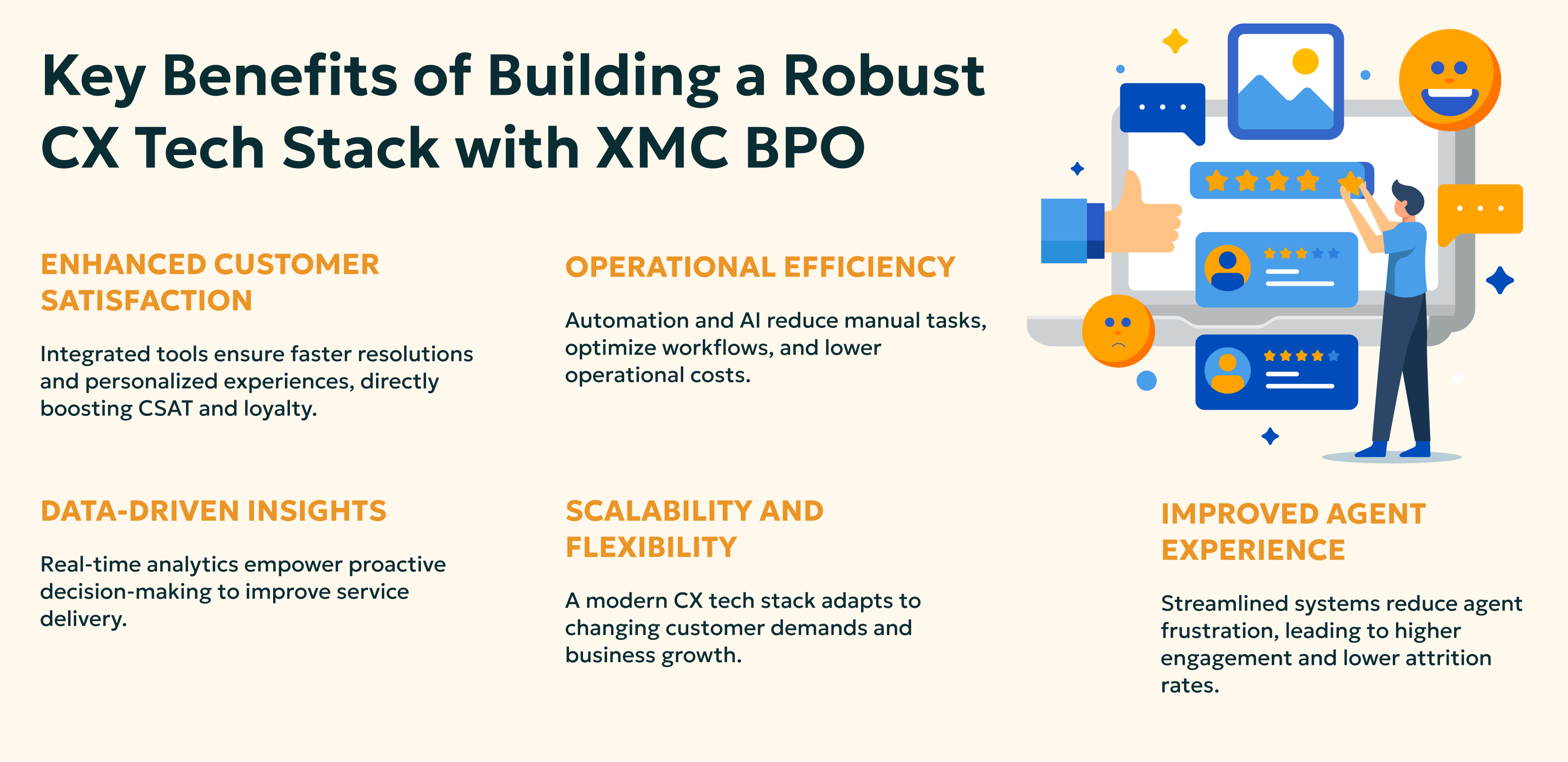In today’s digital-first economy, customer expectations are at an all-time high. Speed, personalization, and seamless interactions across channels are no longer optional — they are the baseline. To meet these demands, contact centers must evolve beyond traditional setups and embrace a robust CX tech stack. Companies like XMC BPO are leading the way by leveraging cutting-edge technologies to deliver exceptional customer experiences (CX) while driving operational efficiency.
What is a CX Tech Stack?
A CX tech stack is a collection of integrated technologies and tools that contact centers use to manage, streamline, and enhance customer interactions. These tools span across communication platforms, workforce management, automation, analytics, and customer engagement solutions.
According to McKinsey, organizations that effectively integrate CX technologies can achieve up to 20-30% improvement in customer satisfaction scores (CSAT) and 15-20% boost in agent productivity.
Essential Tools in a Modern Contact Center Tech Stack

Omnichannel Communication Platforms
Modern customers expect to engage across multiple channels — voice, chat, email, social media, and SMS. Omnichannel platforms unify these interactions, ensuring a seamless experience across touchpoints.
Stat: Companies with strong omnichannel strategies retain 89% of customers, compared to 33% for companies with weak omnichannel engagement. (Aberdeen Group)

Customer Relationship Management (CRM) Systems
CRMs like Salesforce, HubSpot, and custom solutions enable agents to access a 360-degree view of the customer’s history, preferences, and interactions, empowering personalized service delivery.
Key Benefit: Enhanced personalization leads to 60% higher customer retention rates. (Forrester)

Intelligent Call Routing & Interactive Voice Response (IVR)
AI-driven call routing and IVR systems ensure customers are connected to the right agents quickly, reducing wait times and improving first-call resolution (FCR).
XMC BPO utilizes smart IVR systems that have reduced average handle times (AHT) by 20%.

Workforce Management (WFM) Software
WFM tools help optimize agent scheduling, forecasting demand, and tracking real-time performance. They play a crucial role in maintaining service level agreements (SLAs) and reducing operational costs.
Stat: Contact centers that use WFM tools see 22% improvement in scheduling efficiency. (ICMI)

AI-Powered Chatbots & Virtual Assistants
AI chatbots handle routine inquiries, freeing human agents to focus on complex issues. When integrated effectively, they enhance efficiency and provide 24/7 customer support.
Stat: AI chatbots can resolve 80% of standard customer queries autonomously. (Juniper Research)

Real-Time Analytics & Reporting Dashboards
Data-driven decision-making is critical in modern contact centers. Real-time dashboards provide actionable insights into KPIs such as CSAT, FCR, Net Promoter Score (NPS), and agent performance.
XMC BPO leverages advanced analytics to track real-time customer sentiment, leading to a 25% increase in NPS.
Quality Assurance & Speech Analytics
QA tools with speech and sentiment analysis ensure consistent service quality by monitoring calls and providing feedback to agents for continuous improvement.
Stat: Speech analytics can improve agent coaching effectiveness by 28%. (Deloitte)


Key Benefits of Building a Robust CX Tech Stack with XMC BPO
Enhanced Customer Satisfaction
Integrated tools ensure faster resolutions and personalized experiences, directly boosting CSAT and loyalty.
Operational Efficiency
Automation and AI reduce manual tasks, optimize workflows, and lower operational costs.
Data-Driven Insights
Real-time analytics empower proactive decision-making to improve service delivery.
Scalability and Flexibility
A modern CX tech stack adapts to changing customer demands and business growth.
Improved Agent Experience
Streamlined systems reduce agent frustration, leading to higher engagement and lower attrition rates.
XMC BPO’s Approach to CX Technology Integration
At XMC BPO, technology is at the heart of our customer experience strategy. By combining cutting-edge tools with human expertise, we deliver agile, scalable solutions that drive business outcomes. Our integrated CX tech stack has enabled clients to achieve:
- 30% increase in customer satisfaction scores (CSAT)
- 20% reduction in average handle times (AHT)
- 15% increase in first-call resolution (FCR)
Conclusion
The future of customer service hinges on how effectively contact centers harness technology. A well-architected CX tech stack is no longer a luxury — it’s a necessity for businesses aiming to stay competitive and customer-centric. Companies like XMC BPO are proving that with the right tools and strategies, delivering exceptional, seamless customer experiences is not just achievable, but scalable.
References



